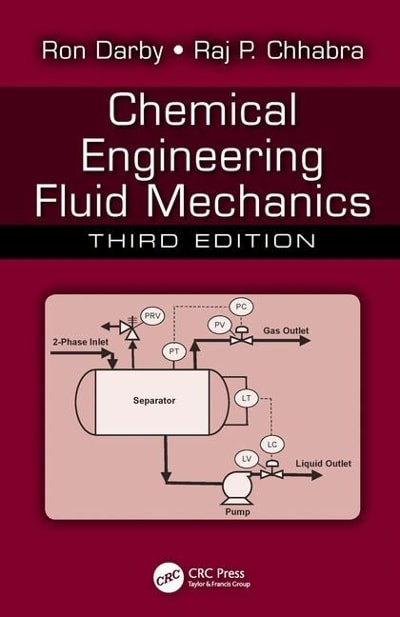The following formula for the pressure drop through a valve was found in a design manual: [h_{L}=frac{522
Question:
The following formula for the pressure drop through a valve was found in a design manual:
\[h_{L}=\frac{522 K q^{2}}{d^{4}}\]
where
$h_{L}$ is the "head loss" in feet of fluid flowing through the valve
$K$ is the dimensionless resistance coefficient for the valve
$q$ is the flow rate through the valve, in $\mathrm{ft}^{3} / \mathrm{s}$
$d$ is the diameter of the valve, in in.
(a) Can this equation be used without changing anything if SI units are used for the variables? Explain.
(b) What are the dimensions of " 522 " in this equation? What are its units?
(c) Determine the pressure drop through a $2 \mathrm{in}$. valve with a $K$ of 4 for water at $20^{\circ} \mathrm{C}$ flowing at a rate of $50 \mathrm{gpm}$, in units of: (1) feet of water, (2) psi, (3) atm, (4) $\mathrm{Pa}$, (5) dyn $/ \mathrm{cm}^{2}$; and (6) inches of mercury.
Step by Step Answer:

Chemical Engineering Fluid Mechanics
ISBN: 9781498724432
3rd Edition
Authors: Ron Darby, Raj P Chhabra





